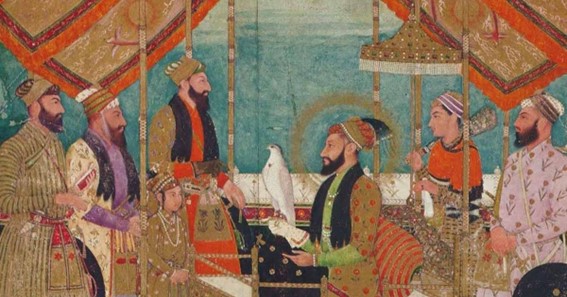Are you curious to know what is mansabdari system? You have come to the right place as I am going to tell you everything about mansabdari system in a very simple explanation. Without further discussion let’s begin to know what is mansabdari system?
The Mughal Empire, which spanned large parts of the Indian subcontinent from the 16th to the 18th centuries, was renowned for its sophisticated administrative and military systems. At the heart of the Mughal administration lay the Mansabdari System, a unique hierarchical system of ranking and employment. In this blog post, we will delve into what the Mansabdari System was, its significance, and its role in shaping the governance and military structure of the Mughal Empire.
What Is Mansabdari System?
The Mansabdari System was a system of ranking and employment introduced by Emperor Akbar in the mid-16th century. The term “mansab” refers to a rank or position, and individuals in the system were known as “mansabdars.” Under this system, every noble, officer, or military commander in the Mughal Empire was assigned a mansab, which determined their official rank and the number of soldiers they were required to maintain.
Key Features Of The Mansabdari System:
- Hierarchical Structure: The Mansabdari System was characterized by a hierarchical structure, with each individual assigned a specific rank or mansab. Mansabs were denoted by a numerical value known as the “zat” (personal rank) and the “sawar” (number of cavalrymen maintained). For example, a mansabdar with a zat rank of 1000 and a sawar rank of 500 meant that the individual held a higher position and was responsible for maintaining a larger contingent of cavalry.
- Centralized Authority: The Mughal emperor held ultimate authority in the Mansabdari System. He had the power to grant or revoke mansabs based on the loyalty, performance, and merits of the mansabdars. The emperor also had the authority to promote or demote individuals within the system, ensuring loyalty and control over the military and administration.
- Dual Responsibility: The Mansabdars held dual responsibilities in the system. Apart from their military duties, they were also assigned administrative roles. They were responsible for maintaining troops, providing them with provisions, and ensuring their training and discipline. In their administrative capacity, they oversaw revenue collection, justice administration, and other governance functions in their assigned territories.
Significance Of The Mansabdari System:
- Centralized Control: The Mansabdari System played a crucial role in establishing and maintaining centralized control over the vast Mughal Empire. By assigning ranks, controlling military forces, and integrating administrative functions, the system enabled the emperor to exert authority and ensure loyalty from the nobility and military commanders.
- Efficient Military Structure: The Mansabdari System provided an effective military structure for the Mughal Empire. It allowed for the mobilization of a large standing army that could be quickly assembled and deployed when needed. The system ensured that the empire had a trained and disciplined military force capable of defending its territories and expanding its influence.
- Revenue Administration: The Mansabdari System played a significant role in revenue administration. Mansabdars were assigned revenue assignments known as “jagirs” or “sawars.” They collected revenue from their assigned territories and were entitled to a share of the revenue for their maintenance and service. This system helped in the efficient collection of revenue and provided a source of income for the mansabdars.
Conclusion:
The Mansabdari System was a hierarchical ranking and employment system that formed the backbone of the Mughal administration and military structure. It allowed for centralized control, efficient military organization, and revenue administration within the empire. By integrating military and administrative functions, the system contributed to the stability and expansion of the Mughal Empire. While the Mansabdari System underwent changes over time, it remains an important aspect of the Mughal legacy, representing a unique system of governance and military administration in Indian history.
FAQ
What Do You Mean By Mansabdari System?
The Mansabdari system was a grading system used by the Mughal rulers to fix the rank and salary of a Mansabdar. They were nobles who occupied various positions in the administration of the Mughal Empire. They were appointed and dismissed by the Mughal Emperor.
What Was Mansabdari System Class 7 History?
The Mansabdari System was introduced by Akbar in India. It was a system of ranking officials. The lowest mansabdar commanded 10 soldiers and the highest mansabdar commanded 10,000 soldiers. Only the princes of the royal family and the most important Rajput rulers were given a mansab of 10,000.
Where Is The Mansabdari System?
Mansabdari System of Akbar – Background
Mansabdari was a unique system that was formally introduced by mughal emperor Akbar in 1571 AD. Mansab is an Arabic term that means rank or position. As a result, Mansabdar means a rank holder or an officer. The Mansabdari system came from Central Asia.
What Is An Example Of A Mansabdar?
Initially, a single number represented the rank, salary, and the size of the contingent of the mansabdar. However later, the rank of mansabdar came to be denoted by two numbers – Zat and Sawar. Example: A a mansabdar with 5000 Zat and 2000 Sawar.
I Have Covered All The Following Queries And Topics In The Above Article
What Is Mansabdari System Class 7
What Is Mansabdari System Class 12
Mansabdari System Pdf
Mansabdari System Upsc
Jagirdari And Mansabdari System
Mansabdari System Introduced By
मनसबदारी प्रणाली
Mansabdari System Was Borrowed From
What Is Mansabdari System
What is the Mansabdari system
What is a mansabdar?






